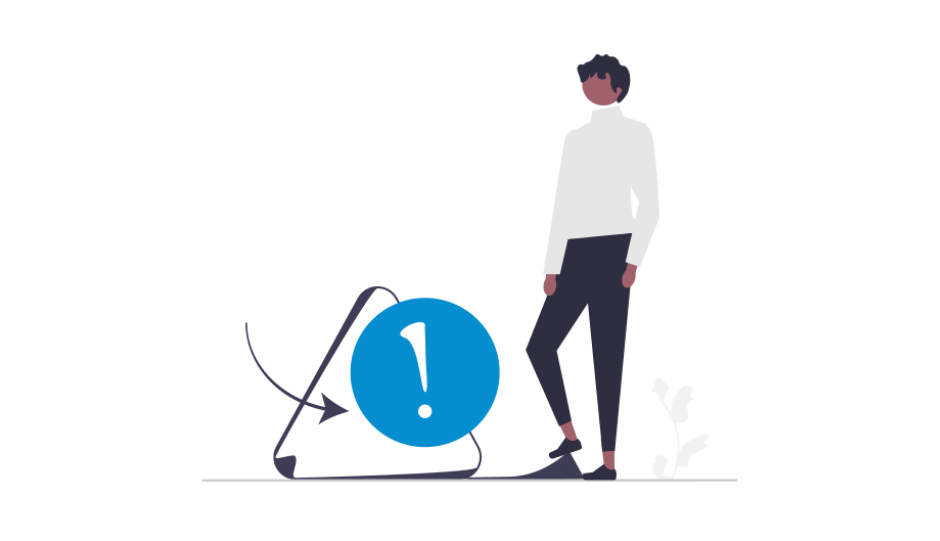Why your customer feedback strategy is failing
Asking for customer feedback can be daunting for businesses and even a good customer feedback strategy can fall apart if the results don’t warrant the stress. However, much of the failure in customer feedback isn’t down to the customer’s resistance, but due to how and when the business asks for feedback. Receiving customer feedback is dependent on four major factors, those are:
- Choosing the right time
- Choosing the right questions
- Choosing the right channel
- Choosing the right people
To help you identify where your customer feedback strategy might be falling short we’ll explore each of these four sections in more detail and offer some suggestions as to how you can improve each. So, without further delay, let’s jump into the first one.
Choosing the right time to ask for customer feedback
Asking while your business, and the customer’s experience of it, is front of mind is very important to survey success. If you leave it too long customers won’t remember the feeling you gave them during the period when you were front of mind. Also, your feedback might not be accurate as the customer struggles to remember exact details and only recalls general feelings.
This is a common feature of eyewitness testimonies in criminal events. Eyewitnesses can struggle to recall details of the event as time passes and the same can be said of businesses asking a customer to recall events from several months ago. If you’re doing a quarterly survey of customers consider whether too much time has passed for that individual. Not only will the fidelity of their experience be negatively affected by time but they may be less willing to give you feedback.
Choosing the right time to ask for feedback means finding the point when a customer is thinking about you and the experience they had, and also has the time and goodwill to give you their feedback. Unable to think of when timing and customer goodwill are not always aligned? How about this example...
Have you ever been at a restaurant, the main meals have arrived and you’re busy tucking in and the server comes over to ask how everything is with your meal? The timing of this is almost always terrible because you’re either mid-way through a mouthful and unable to speak or you’re simply trying to enjoy the meal and don’t want to be disturbed. This is a perfect example of the right action but at the wrong time. Many diners are dismissive of the staff as they simply want to enjoy their food so respond with the affirmative, even if that’s not the case.
So when is the right time to ask for feedback? Well, if you’re thinking of a moment in the customer’s buying journey, simply put yourself in the customer’s shoes and consider how you’d feel about being asked at that moment.
Choosing the right customer feedback questions
Selecting the right questions aligns nicely with the timing of the survey. It would be slightly odd to ask someone what their experience was like if they have yet to purchase from you! You have to ensure the questions you ask align with the stage of the purchase process the customer has reached.
Alongside that, you have to ask questions so as not to lead the response and get a misleading answer. You need to pair that with an answer format that makes sense to the respondent. Does that sound like a lot? It doesn’t have to be overwhelming, simply follow these considerations when creating your survey to avoid some common pitfalls.
Be clear in your questions
Being concise and clear is key to getting the best responses in your surveys. Write the question you want to ask and then try and cut the word count in half, or as close to half as you can. You also need to make the question unambiguous and specific. Here’s an example:
“Please tell us, in your own words, the thing you most enjoyed about our service.”
And here’s an alternative way of asking the same question:
“What’s the one thing that stood out about our service?”
The alternative isn’t quite half the word count but it is more clearly asking a question. It also doesn’t lead the respondent to a guided response. You’ll notice the first question asks only about a positive experience, while the second just wants the main take-home of the entire experience.
Use engaging response types
It can be tempting to make the respondent do all the work by giving them a free text box. Sadly, people are busy and might not expand their response to the level you’d hope. You can reduce survey fatigue and increase engagement by mixing up the response types. You could include a question that has people rank the options from favourite to least favourite. You can use sliders, drop-down lists, and more to create some variety.
The trick is to be consistent. Don’t use a slider from one to ten and have most of the questions use one as the worst/lowest and ten as the best and then change the slider to a different rating system. This is another area where being clear in your questions is key. Don’t assume that all respondents would use a rating of one to represent the worst!
Choosing the right customer feedback channel
While timing your customer feedback survey is important you also want to make sure that you’re using channels the customer feels comfortable with. You could time the survey’s delivery to perfection by sending a tailored email with a clear link but if your customers don’t want to receive emails from you then they won’t even open the email.
So how do you choose the right channel to request customer feedback? The real trick lies in covering many of them, and not simply relying on one. Too many businesses try something like emails, don’t get a good response and think it’s because their customers are averse to giving feedback. The truth is more likely that they’re averse to email as a request method. To combat this, use email and another channel, or more! You might try posting surveys out to some people and then following that up with an email if they don’t respond. You might add a QR code to a leaflet or packaging or even call someone. It’s best if you have a system that can identify whether someone has already completed one of these previous methods before you move on to the next. That’s why we integrate with the HubSpot CRM so you can easily see if a contact has provided their feedback through Review Tui from the contact’s record. You could even have them removed from a smart list of people to reach out to when you receive their feedback.
Choosing the right people for customer feedback
Not everyone will be willing to give you feedback, and that’s OK. You can use automation to ask a lot of people at once, with minimal effort, or you can take a more personal approach with a smaller list of contacts. What you need to ensure is that you’re asking people that are likely to have had a good experience, and people that may have had a bad experience.
Asking everyone can be a simple solution to this. Or at least making the ability to leave feedback available to all. If you don’t ask, you don’t get and this is never more true than when your business is trying to get customer feedback.
If your customer feedback strategy isn’t quite working then trialling a few new approaches might give it the boost it needs. One of the biggest differences we see is a business switching from an ad hoc approach to asking for feedback to a more systematic approach. This may be by triggering tasks or emails through your marketing automation platform or having a dedicated team member responsible for gathering feedback. Whatever you choose Review Tui could be the perfect platform to gather those responses. To register your interest and be notified of the application's public launch, click the button below and fill in your details.




